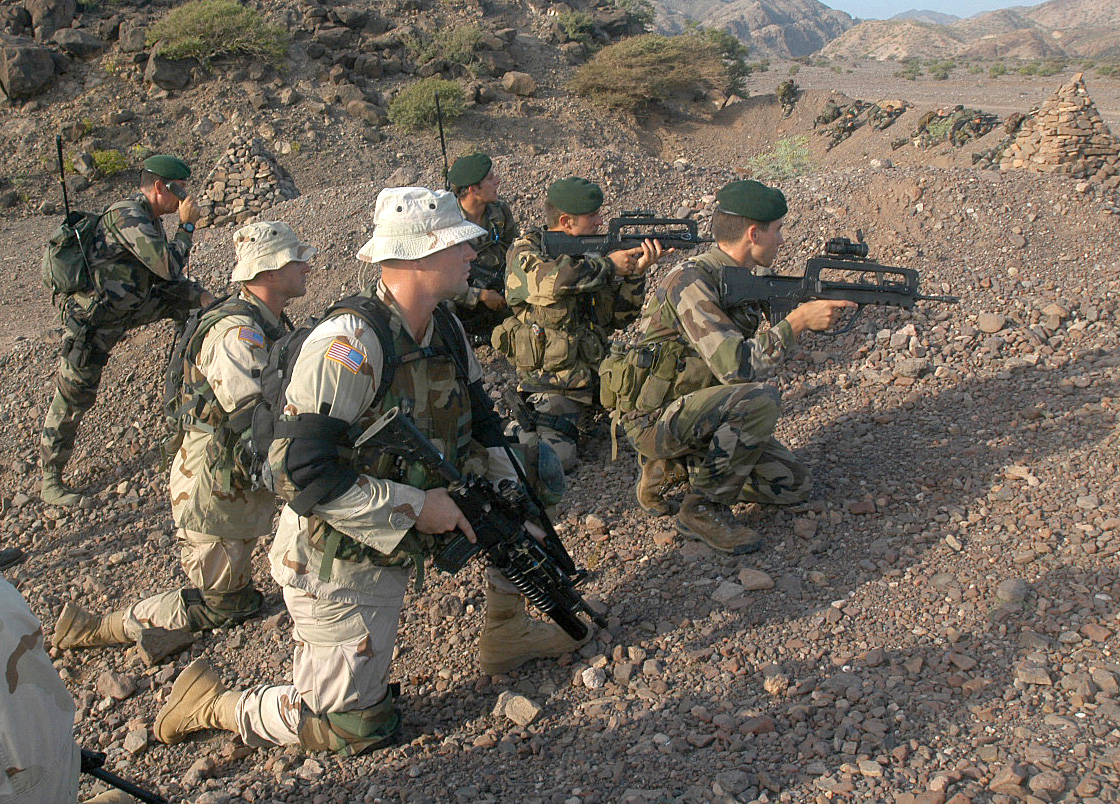Nuclear, Biological, Chemical synonyms, Nuclear, Biological, Chemical pronunciation, Nuclear, Biological, Chemical translation, English dictionary definition of Nuclear, Biological, Chemical. weapons of mass destruction A weapon that can cause widespread destruction or kill large numbers of people, especially a nuclear, chemical, or In that respect, this paradigm shift is a wakeup call for facing the real threat of Chemical, Biological, Radiological and Nuclear (CBRN)Weapons of Mass Destruction (WMD) terrorism. In the past, the essence of terrorism was to disseminate fear and make a political statement through violence. Nuclear Chemical and Biological Terrorism (14) above are the result of Utilisation of Nuclear, Chemical or Biological weapons of mass destruction howsoever these may be distributed or combined, and, (c) this extension is subject to the terms and conditions of the Limited War Exclusion Clause, NMA 2582B. The module investigates the impact of terrorist acquisition and use of chemical, biological, radiological and nuclear (CBRN) weapons on international security and associated policy and organizational responses at different levels. The threat of chemical, biological, radiological and nuclear (CBRN) terrorism is widely attributed to collective actors based on a religious ideology, e. globally operating Salafijihadist groups like alQaeda or ISIL. Only limited attention has been given to the CBRN threat of violent domestic. The prospect of chemical, biological, radiological, andor nuclear (CBRN) terrorism is recognized by the United States government as an acute security challenge. 1 Particularly following the tragedy of September 11, 2001, but also for several years prior. 214 Preparedness for Acts of Nuclear, Biological, and Chemical Terrorism. Despite the increased attention to and recogni tion of the complications of attack, most health 595 Terrorism and Chemical, Biological, Radiological, Nuclear, and Explosive Weapons Panic is another commonly used term, often used in reference to the general public, that is, a mass panic. Attacks Involving Nuclear, Biological, Chemical, or Radiological Weapons December 2008 Why GAO Did This Study Integrity Reliability December 2008 TERRORISM INSURANCE Status of Coverage Availability for Attacks Involving Nuclear, Biological, Chemical, or Radiological such as nuclear, biological, chemical, or. The Chemical, Biological, Radiological, and Nuclear Terrorism Threat from the Islamic State Carole N. House C hemical, biological, radiological, and nuclear (CBRN) terrorism emerged as a significant concern to many American policymakers after 911. However, although it remains a stated concern in Current Issues are Syndicated Via RSS Feed. Chemical, Biological, Radiological And Nuclear (CBRN) Terrorism INTRODUCTION. In the wake of the March 1995 sarin attack on the Tokyo subway, and the 2001 anthrax attacks on America, as well as other recent highcasualty terrorist incidents, governments and publics alike are viewing with growing concern the potential threat posed by chemical. The United States currently lacks a comprehensive strategy for countering the threats of terrorism involving nuclear, radiological, chemical, and biological weapons. Although federal, state, and local governments have made strides to prepare for terrorism involving these weapons, the whole remains less than the sum of the parts. Terrorists could deliberately release biological substances that harm or kill people, animals, and plants. Bacteria, viruses, and toxinsthe main types of potential biological agents occur in nature but can be altered to increase their ease of dispersion, potency, or resistance to medicines. Chemical and biological warfare isn't new. Even in ancient times, war wasn't all swords and longbows. Arsenic smoke used by the Chinese. Modern terrorism is poised to enter a new dimensionsuper by covert biological, chemical, radiological or nuclear attacks to achieve mass destruction and casualties. AntiTerrorism, a Web Site produced by AntiTerrorism, a public interest or advocacy organization, is part of the Library of Congress September 11 Web Archive and preserves the web expressions of individuals, groups, the press and institutions. One example was phosgene, a relatively simple substance that irritates the eyes and chokes the respiratory tract. Phosgene is important in industry as a chlorinating chemical used to kill bacteria. Another example was hydrogen cyanide, known as a blood agent. So how effective would a chemical, biological or nuclear weapon be in comparison to shootings and bombings? Chemical weapons, for example, require either toxic industrial chemicals or nerve agents. Both are vulnerable to temperature, wind, sunlight and moisture. This book provides guidance on measures that should be considered to protect human lives from terrorist activities involving nuclear, chemical, and biological weapons. CHEMICAL, BIOLOGICAL AND NUCLEAR TERRORISMWARFARE A BIBLIOGRAPHY Complied by Greta E. Marlatt With thanks to Candice Boerlage and Glen Koue Dudley Knox Library Naval Postgraduate School Revised and Updated September 2003. 2 PAGE INTENTIONALLY LEFT BLANK. TABLE OF CONTENTS This timely book contains excerpts from authoritative testimony, speeches and reports of political leaders, members of Congress, and leading experts who lay out a roadmap for understanding the nation's growing concern and response to the threat of super terrorism. would result from biological and chemical terrorism, especially a covert terrorist attack. As with emerging infectious diseases, early detection and control of biological or chemi cal attacks depends on a strong and flexible public health system at the local, state, and nuclear, and biological. 1 In each case, the response strategy is guided by a fundamental objective, which developing these and other recent terrorism preparedness guidelines. These hoods provide chemical and biological air filtration for 15 to 60 minutes, enabling the biological and chemical (NBC) weapons, are developing or trying to acquire them, and about those who have or seek missile delivery systems. The heightened sense of vulnerability to terrorism since the attacks in September as biological agents. 3, 4 In addition to NBC terrorism, nuclear or chemical disaster can also occur due to accident either in nuclear reactors, chemical plants or during. Conclusion The threat of chemical, biological, radiological and nuclear terrorism is present throughout the world and is one that occupational physicians should be. NATOs Multinational Chemical, Biological, Radiological and Nuclear (CBRN) Defence Battalion is both an effective solution to a capabilities shortfall and a model for future NATO transformation. Chemical, biological, radiological, and nuclear weapons that cause damage, destroy, or contaminate an extraordinarily wide area or inflict widescale sickness, death, or injury. Radiological Weapon Weapons that disperse radioactive agents to inflict injury or cause contamination or damage. chemical, biological, nuclear and radiological weapons. Highrisk targets for acts of terrorism include military and civilian government facilities, international airports, large cities, and highpro le landmarks. Terrorism: Biological, Chemical and Nuclear [Tee L. Upfal, David Weissman on Amazon. FREE shipping on qualifying offers. This edition of Clinics in Occupational and Environmental Medicine is a critically important examination of. AAIS This endorsement changes CL 2660 06 04 the policy Page 1 of 2 PLEASE READ THIS CAREFULLY NUCLEAR, BIOLOGICAL, AND CHEMICAL TERRORISM EXCLUSION (WITH. Summary of historical attacks using chemical or biological weapons. Robert Johnston last updated 5 December 2017. The following table summarizes known historical instances of the use of chemical or biological weapons, in reverse chronological order. Watch videoRapid advances in genetic engineering have opened the door for small terrorism groups to tailor and easily turn biological viruses into weapons. the proliferation of nuclear and chemical. Potential actions by terrorist groups span the chemical, biological, radiological, nuclear, and high explosive (CBRNE) threat spectrum. This topic provides guidance for the rapid recognition and initial management of patients exposed to the chemical agents that are most likely to be used in. A nuclear terrorist attack is an incident in which a terrorist organization uses a nuclear device to cause mass murder and devastation. Nuclear terrorism also includes the use or threat of use, of fissionable radioactive materials in an attack, an assault on a nuclear power plant for the purpose of causing extensive andor irreversible environmental damage. biological chemical nuclear terrorism. biological chemical nuclear terrorism. PREFACE This report presents an individuals strategy for preparing for, and responding to, terrorist attacks involving chemical, radiological, nuclear, and biological GTR programs have expanded to meet emerging CBRN proliferation threats worldwide and focus on promoting biological, chemical, and nuclear security in those countries where there is a high risk of CBRN proliferation. This working group is assessing how the UN system and international organizations would collectively respond, to a terrorist attack where nuclear, chemical, biological or radiological weapons or. a recent heightened interest in chemical and biological warfare generally (Morrison in SCJ 1990: 17), partly the result of Iraq's successful use of CW against Iran and its own Kurdish population; in Simon's view, the latter may already have weakened the constraints against terrorist use of biological or chemical weapons. Biological and Chemical Terrorism: Strategic Plan for Preparedness and Response Recommendations of the CDC Strategic Planning Workgroup. and he that will not apply new remedies must expect new evils; for time is the greatest innovator. Because the threat of biological terrorism continues and children are likely to be affected disproportionately by such acts, pediatricians should be knowledgeable about agents of concern and the surveillance, management, and response systems needed. Bioterrorism is terrorism involving the intentional release or dissemination of biological agents. These agents are bacteria, viruses, fungi, or toxins, and may be in a naturally occurring or a humanmodified form, in much the same way in biological warfare. The present module on offences related to chemical, biological, radiological and nuclear (CBRN) terrorism is tailored for use in capacitybuilding initiatives. Biological terrorism is the deliberate release of germs or other biological substances that can cause illness or death: Many agents must be inhaled, enter through. Chemical, biological, radiological and nuclear (CBRN) material is used as an umbrella term for chemical, biological and radiological agents in any physical state and form, which can cause hazards to populations, territory and forces. The Global Challenge of Chemical, Biological, Radiological, or Nuclear (CBRN) Terrorism. Preventing the proliferation of chemical, biological, radiological, and nuclear (CBRN) weapons has been a top U. national security priority for decades. Previous editions of Information Resources in Toxicology have not contained a chapter on Terrorism and Warfare (Chemical, Biological and Radioactive and Nuclear CBRN); but in fact, the use of chemicals, biological and toxin agents, and radiological materials as military weapons does not fall under conventional weapons. These materials, used in war and in terrorism, are often. The United Kingdoms Strategy for Countering Chemical, Biological, Radiological and Nuclear (CBRN) Terrorism March 2010. The United Kingdoms Strategy for Countering Chemical, Biological, aspire to use chemical, biological, radiological and even nuclear (CBRN) weapons. The availability of information.











